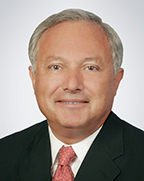Footing the Bill for Healthcare
By Bassam A. Kawwass, FACHE
As the administrator of a large, independent cardiology practice, I regularly scour the media and healthcare journals for news that might directly affect our patients, as well as our practice. Especially since the passage and implementation of the Affordable Care Act, culling through this material can be a full-time job, but it’s absolutely critical.
Of particular interest to patients and independent physician groups is the spate of hospital systems acquiring physician practices, and the corresponding unintended consequence of patients being charged higher fees for tests and procedures at hospital-owned practices for the identical services and tests previously provided in their independent physician’s office.
One of the relevant articles written on this topic appeared in the June 14, 2013 issue of The New York Times, entitled “Medicare Panel Urges Cuts to Hospital Payments for Services Doctors Offer for Less.” In the article, veteran reporter Robert Pear wrote that the 17-member Medicare Payment Advisory Commission’s report found that, “In many cases, a physician’s practice that is purchased by a hospital stays in the same location and treats the same patients,” but “Medicare and beneficiaries pay more for the same services.”
Pear wrote that the federal advisory panel concluded “that Congress should move immediately to cut payments to hospitals for many services that can be provided at much lower cost in doctors’ offices,” and urged Congress to equalize payment rates or at least reduce the disparities for doctor’s office visits and hospital clinic visits in which similar patients receive the same or similar services.
This topic has been much debated since Pear’s article appeared last June, with emotions running high on both sides of the issue.
In the January 20, 2014 edition of Modern Healthcare, Joe Carlson writes in his article, “Revealing times:”
“Growing pressure by policymakers, employers, consumers and the media to publicly reveal the prices charged by healthcare providers and reimbursed by payers is forcing providers and payers to reconsider their long-standing opposition to price transparency. Last week, the CMS announced it would start providing information under Freedom of Information Act requests on how much Medicare pays individual physicians. Employers, news organizations and watchdog groups have been seeking that information for many years. The American Medical Association immediately protested that the policy could violate the privacy rights of doctors and patients. In addition, experts are pointing to a little-noticed, 56-word provision buried in the Patient Protection and Affordable Care Act requiring all hospitals to publish a list of their standard charges for items and services… While HHS hasn’t yet issued a rule implementing that provision, Section 2718(e), some experts say that when it is implemented, it could create powerful pressure for even greater price transparency.”
The provision in question reads as follows: “Each hospital operating within the United States shall, for each year, establish (and update) and make public (in accordance with guidelines developed by the Secretary) a list of the hospital’s standard charges for items and services provided by the hospital, including for diagnosis-related groups, established under Section 1886(d)(4) of the Social Security Act.”
Patients believe they have a right to know what they’re paying for, whether they’re at the car dealership or the doctor’s office – or in the hospital. The focus must be on VALUE.
 Bassam A. Kawwass, FACHE is the administrator for Cardiovascular Associates, Ltd. (www.cval.org), the premier largest independent, full-service cardiology practice. E-mail: bkawwass@cval.org. Mr. Kawwass served as past Regent at Large for the American College of Healthcare Executives. He earned a Master’s in Health and Hospital Administration from Virginia Commonwealth University, a Medical Records Administration degree from St. Louis University, and a Bachelor’s in Business Administration from the American University of Beirut, Lebanon.
Bassam A. Kawwass, FACHE is the administrator for Cardiovascular Associates, Ltd. (www.cval.org), the premier largest independent, full-service cardiology practice. E-mail: bkawwass@cval.org. Mr. Kawwass served as past Regent at Large for the American College of Healthcare Executives. He earned a Master’s in Health and Hospital Administration from Virginia Commonwealth University, a Medical Records Administration degree from St. Louis University, and a Bachelor’s in Business Administration from the American University of Beirut, Lebanon.

